Greenland
Grades 1+
The year is 982. The Vikings are a warrior people. They are feared up and down the coasts of Europe.
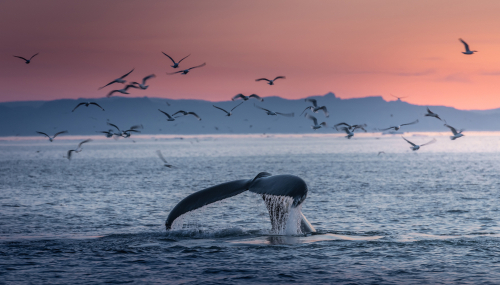 One of their longships plows through the North Atlantic Ocean. It is captained by Erik the Red, so named because of his flowing red hair and thick red beard. The ship runs low in the water. Much of it is filled with food and tools for a new life.
One of their longships plows through the North Atlantic Ocean. It is captained by Erik the Red, so named because of his flowing red hair and thick red beard. The ship runs low in the water. Much of it is filled with food and tools for a new life.
“Row!” Erik shouts at the men seated on chests that hold their belongings. “Row as though the Furies are swooping down to seize your souls!”
The sailors and slaves bend their backs into the work. Freezing waves spill over them. The sail snaps in the wind. The ship’s bow, carved in a dragon’s head, slices through the water.
Erik’s wife, Thjódhild, stands beside him. There is no going back home to Iceland. Erik killed Eyjolf the Foul for murdering two of Erik’s slaves. Erik was exiled from Iceland for three years.
He has heard of an island to the northwest. Legend says Vikings lived there a long time ago, but their colony disappeared.
Is there really such a land? Erik wonders. Or will this terrible ocean drown us all!
♦
Days later, the crew sights mountains. They rejoice. When they drag themselves ashore, they are exhausted, but they laugh and sing Viking songs. Trees and pasture line the coast.
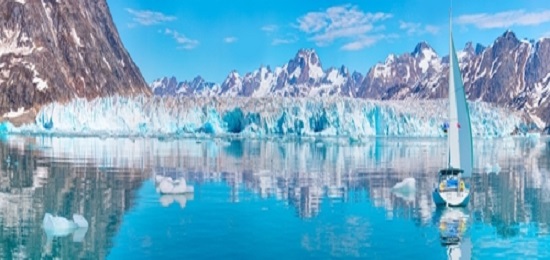 Most of the island is covered with a wall of ice higher than a fortress, but they do not want to live inland. They are sailors.
Most of the island is covered with a wall of ice higher than a fortress, but they do not want to live inland. They are sailors.
They can make their home near the sea. They cut trees and gather rocks and sod to build homes. Soon, they are raising barley and other crops. During summer, the temperature is even warm enough that people can go swimming in the fjords.
When the three years pass, Erik returns to Iceland.
“Join me!” he tells everyone. “It is a Green Land!”
He does not tell them about the wall of ice.
Twenty-five longships sail for Greenland. Some carry cattle, sheep, goats, and horses. But only 14 ships make it there. The other 11 are lost at sea.
♦
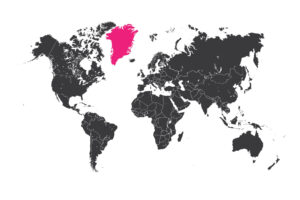 Erik and Thjódhild have a boy, named Leif Ericsson. He soon becomes a man.
Erik and Thjódhild have a boy, named Leif Ericsson. He soon becomes a man.
“I want to sail back to Norway,” he tells his parents. “I want to see the home of the Vikings.”
Erik and Thjódhild wave as Leif sails away.
Back in Norway, Leif finds that Christianity has come to that country. He accepts Jesus into his heart.
When he returns to Greenland, he brings a priest. Soon, Thjódhild also becomes Christian.
“Build us a church,” she tells her husband.
Erik does. It becomes the first church in North America.
“I have built it, but I won’t become Christian,” he tells her.
“Then I will live in Leif’s house until you change your mind,” she says stubbornly.
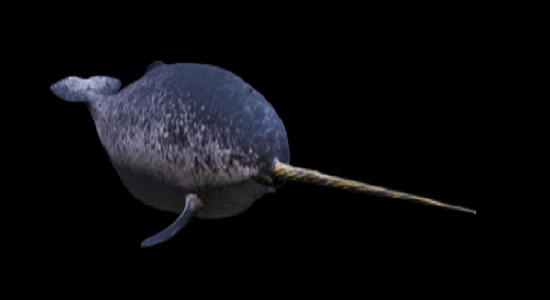
It breaks Erik’s heart when Thjódhild moves out of his house. But Erik does not like the new religion. It preaches peace. It tells you to turn the other cheek when people injure or insult you. The Vikings are sea pirates. The old gods admire men who kill enemies, kidnap women, and pillage other people’s homes.
“I need to leave again,” Leif later tells his parents. “But I’m sailing west this time.”
He wants to spread Christianity, and he wants to find new lands for his fellow Vikings.
He becomes the first European we know of to reach the Americas.
Back in Greenland, a plague hits the colony. It is brought by new settlers.
Thjódhild kneels beside Erik’s bed.
“Accept Jesus,” she tells him. “We will be together in the afterlife.”
Erik shakes his head. He does not want the heaven of the Christians. He wants Valhalla, the Vikings’ heaven.
He dies.
The settlement finally survives the plague. The people return to farming, and they sell walrus ivory to rich Europeans. Many Europeans think the narwhal tusks come from unicorns.
Centuries pass. The Viking colony dies out and disappears. We don’t know what happened. Most likely, it was climate change. The world became colder. The Vikings had cut the trees, and it was too cold for new trees to grow.
Also, the Vikings ran out of firewood. They needed it to heat their homes, but they also needed it for extremely hot fires for turning iron into weapons. There probably was a war with the Inuit – the island’s First Peoples – and now the Vikings could not do battle like they used to.
♦
The Inuit of Erik’s time believe the island’s tallest mountain, Uummannaq, is magical. They say it has a beating heart. You could hear it if you listen carefully. The people feel they owe it everything. Every snowstorm and every crash of ice into the sea has something to do with the mountain.
The Inuit fish and hunt whales, walruses, seals, polar bears, and other animals. During summer, they live in tents made of animal skins. In winter they live in dark, damp homes made of peat and rocks, with roofs of animal skins held up by whalebone. The little light the houses hold comes through windows made of walrus intestines. It is a myth that the Inuit lived in igloos. Those were only used during emergencies on hunts.
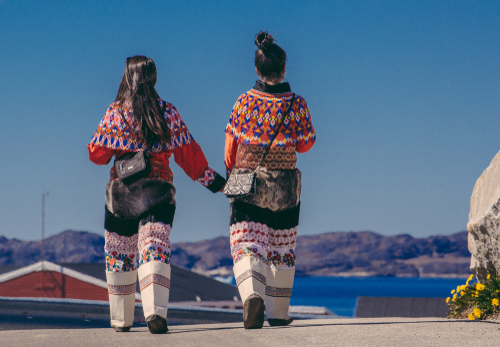 Today, Greenlanders live in European-style houses. Until recently, the Greenlanders painted them different colors for who lived there. Red buildings, for example, meant a school or church or the home of teachers or ministers.
Today, Greenlanders live in European-style houses. Until recently, the Greenlanders painted them different colors for who lived there. Red buildings, for example, meant a school or church or the home of teachers or ministers.
Many scientists now flock to Greenland. The great sheet of ice is melting. If all the ice melts, the oceans will rise 23 feet! That means that many cities around the world could be flooded.
Greenland Activity 1
- Match the words below with their definitions.
a. Furies ____
b. fjords ____
c. sod ____
d. pillage ____
e. tusks ____
f. narwhals ____
g. plague ____
h. flocks ____
i. intestines ____
j. peat ____
1.Whales with a very long tooth
2. Many people or animals going somewhere.
3. The insides of people and animals
4. Undersea gods
5. Illnesses that affect many people.
6. Packed dirt
7. Inlets from the sea.
8. Decayed vegetation
9. Burn and rob communities.
10. Especially long teeth in certain animals.
Greenland Activity 2
Find the words below in the essay. Then fill in the blanks of the noun test. For example:
runners
The ______________________.
The runners.
Some words will not fit. Skip those. Don’t identify their part of speech. For example:
enjoy
The enjoy
Write N after all the words that are nouns. Don’t worry about the others. Use the noun test: noun = the ______
1. they | 4. mountains | 7. heart | 10. were | 13. years |
2. longships | 5. scientists | 8. sea | 11. melts | 14. style |
3. water | 6. become | 9. dies | 12. world | 15. whales |
Greenland Activity 3
Repeat Greenland Activity 2. But this time you sometimes you will fill in the second blank. To do that, you may need to fill in the first blank with a word that is not on the list. For example:
Greenland
The ______________________ named __________________________.
The Greenland. The country named
Greenland.
Some words will not fit either blank. Skip those. For example:
enjoy
The enjoy The person named enjoy
Identify the nouns in the list below. Take into account how the word is used in the essay.
Write N after all the words that are nouns. Don’t worry about the others.
Use the noun test: noun = the ______ OR the _______ named _______
|
1.
he |
4.
say |
7.
also |
10.
Thjódhild |
13.
Iceland |
|
2.
sheet |
5.
Vikings |
8.
people |
11.
carry |
14.
igloos |
|
3.
magical |
6.
firewood |
9.
Inuit |
12.
church |
15.
Jesus |